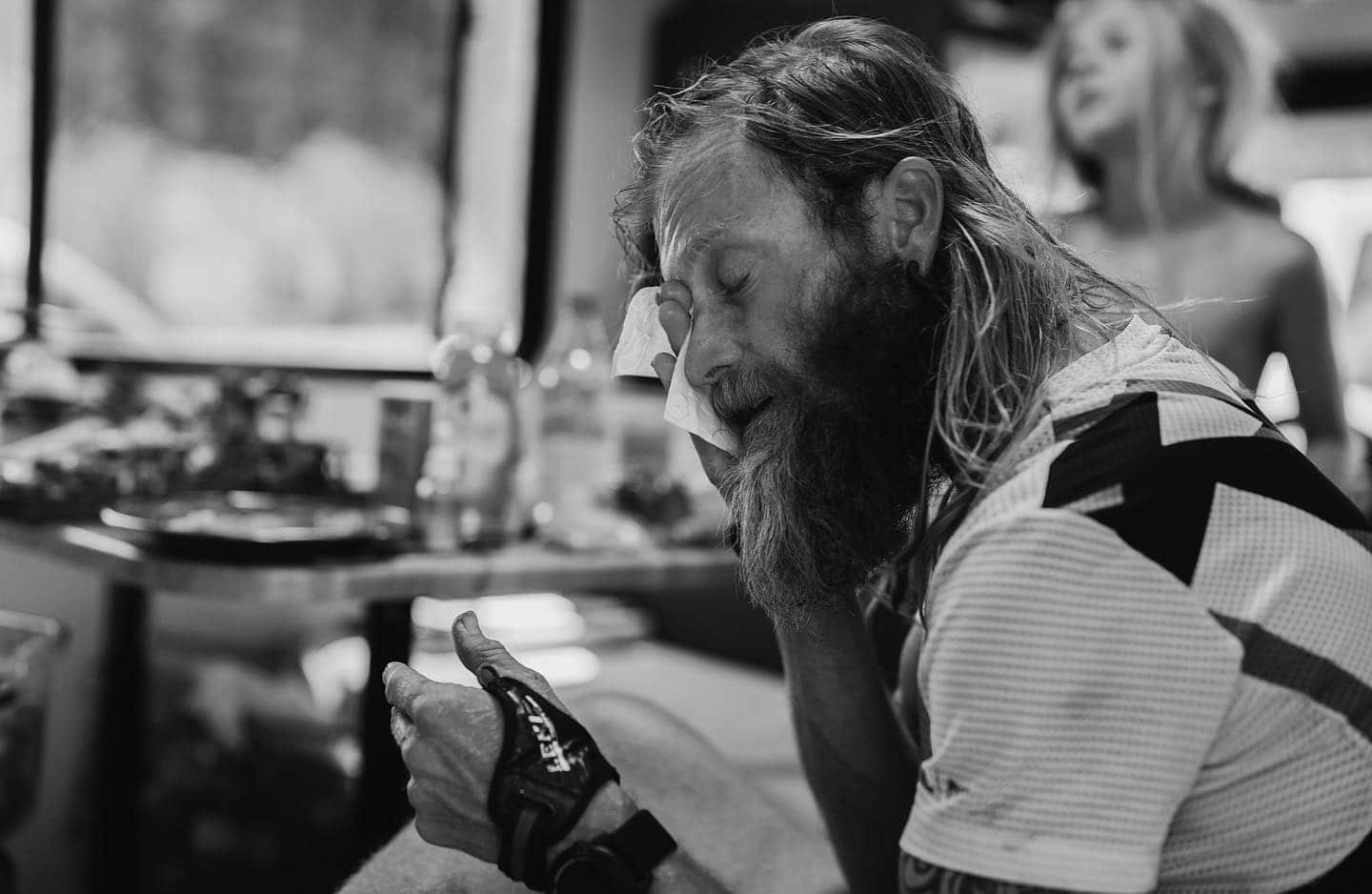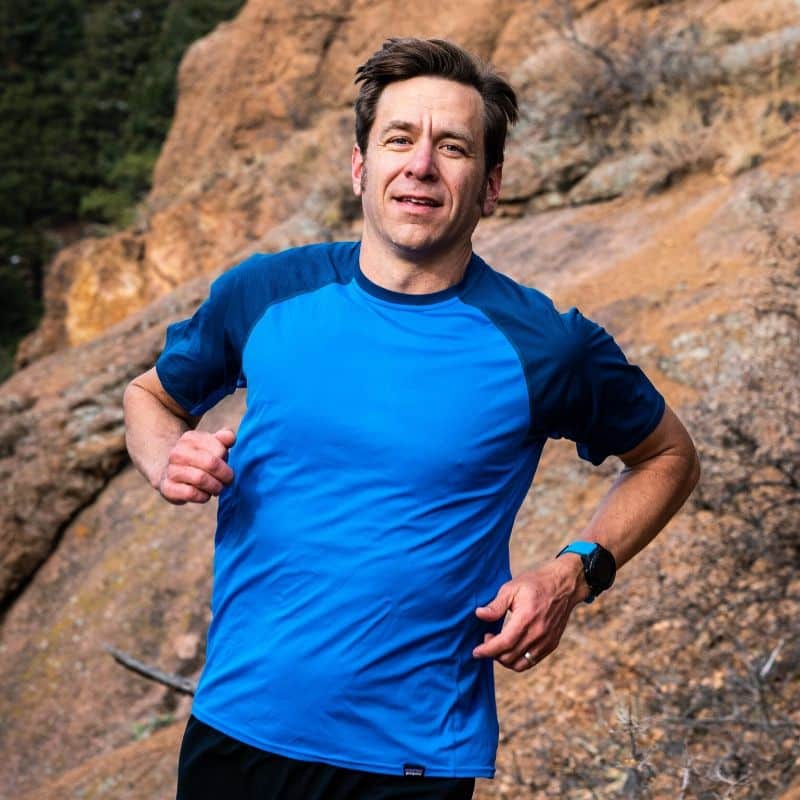
Timothy Olson’s Unique Challenges Coming for Final Days of Pacific Crest Trail FKT Attempt
By Jason Koop,
Head Coach of CTS Ultrarunning
I have spent the past six weeks crewing for Timothy Olson as he attempts to set an FKT on the Pacific Crest Trail. As of his stopping point on Sunday, July 11, he has 11 days, 8 hours, and 25 minutes to reach the northern terminus and break the current FKT set by Karel Sabbe. He’s ahead of record pace, but we’ve reached a critical point in the journey. As mileage, duration, and fatigue pile up in ultraendurance events, an athlete’s threshold for adversity and physiological changes diminishes.
You can hear a bit of what I’m talking about in this Instagram video. Tim says, “I just can’t tell what I am. Am I hot? Am I thirsty?” The longer you’re out in the elements, the less attuned you may become to the differences between sensations and both physical and mental responses. When he’s rested, or even when he’s deep into an ultramarathon, he can discern the difference between overheating and not drinking enough – even though they are related. Forty-one days into the PCT, it’s not so clear. This happens in the last third of a 100-mile race just like it happens when you attempt multi-day or expedition length challenges.
Tim’s threshold for adversity and his adaptability to changing conditions is also diminishing, which is normal and expected in expedition-length endurance challenges. Normally, a 5-degree shift in air temperature doesn’t phase a runner, or if it does, he or she can make a clothing or strategy change and move on. But with weeks of cumulative fatigue–I probably prescribe 50-mile runs a handful of times per year, across all the athletes I work with, and Tim is doing roughly 50 miles per day–his physiological resources are at capacity. It doesn’t take much of a change in temperature, trail conditions, food, etc. to throw him off his pace.
The physical and psychological difficulty of the challenge is also increasing, as it does toward the end of any ultrandurance event. Everyone can get over the first three climbs. A smaller group makes it over the fourth and fifth. By the time you get to the 8th and 9th it’s a select group in contention. Even if it’s a loop course and you’re running the same climb on every lap, that same climb gets harder as the hours and miles pile up. A 300-foot climb five weeks ago was no problem. Now it’s a much bigger challenge.
So, the question becomes, what do you do when you can anticipate that your threshold for adversity is going to–or already is–making the back half of your event much more difficult?
Recognize and Acknowledge
It’s important to recognize when your capacity for adapting to adversity starts diminishing so you can lean on your crew for a bit more decision making or consultation. As a crew, you have to realize that the margin for error is also getting narrow. The consequences of every interaction with your runner–good or bad–are magnified compared to earlier in the event. Mistakes and inconveniences your runner could roll with early can become major problems now.
Pace the beginning for the end
Knowing that it’s going to be more taxing to rise to the physical challenges of the final third of the event, it’s important to pace the first third or first half of an event based on your performance expectations for later on. And as reality sets in and the going gets tough, you have to keep a clear head and redirect thoughts of frustration, self-sabotage, and self-doubt. You’re slowing down and the climbs are getting harder because you’ve been out there for so long. That’s what’s supposed to happen. Don’t get frustrated by the change in pace and decide to quit.
► Free Ultrarunning Training Assessment Quiz
Take our free 2-minute quiz to discover how effective your training is and get recommendations for how you can improve.
Enjoying This Article? Get More Free Running Training Tips
Get our coaches' best training advice, delivered straight to your inbox weekly.
Tim is moving well and running strong. As he gets closer to the end of the adventure, everyone on the team is paying even more attention to detail so we can avoid mistakes that could cost him time or cause him to break instead of bend. These same philosophy and strategies can be employed toward the end of any ultramarathon.


Comments 4
Great information about Tim!
Just one question, has/is he used/using any mental skill? Meditation, imagery, etc etc.? Or just waking up and pushing forward?
Best of Luck to Tim and all your crew Jason!
On-on!
I think his last name is “OlsOn” not “OlsEn”
cf the article’s title “Timothy Olsen’s Unique Challenges Coming for Final Days of Pacific Crest Trail FKT Attempt”
Thanks Jason, very interesting article. FYI, you’ve listed the trail as Pacific Coast, I’m sure you meant Pacific Crest Trail. I’m still the most impressed with Heather Anderson’s, (Anish), self-supported record of 60d 17 hrs. beating almost all others supported or not, except a few.
I know when I’ve been seriously sleep depraved, (under physical exertion, or not), I’ve literally become somewhat psychotic. I remember Heather stating that towards the end of her trek, she was so naturally wired and pumped, that she tore through streams & over logs, and if she heard any animal sounds, (mt. lion, bear, coyote), she would just yell and grunt, (like, bring it on!).